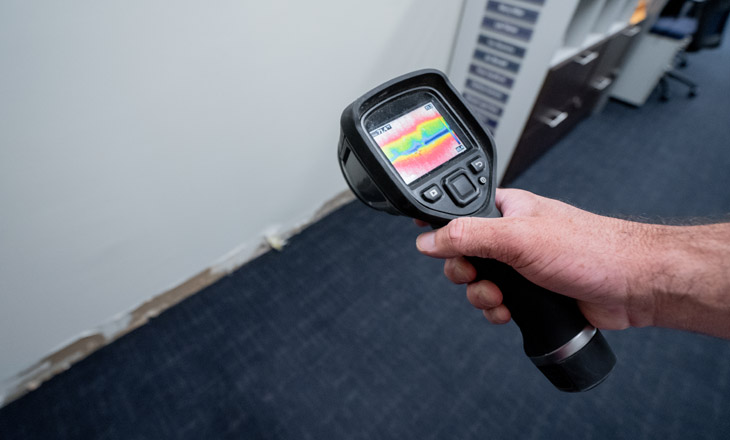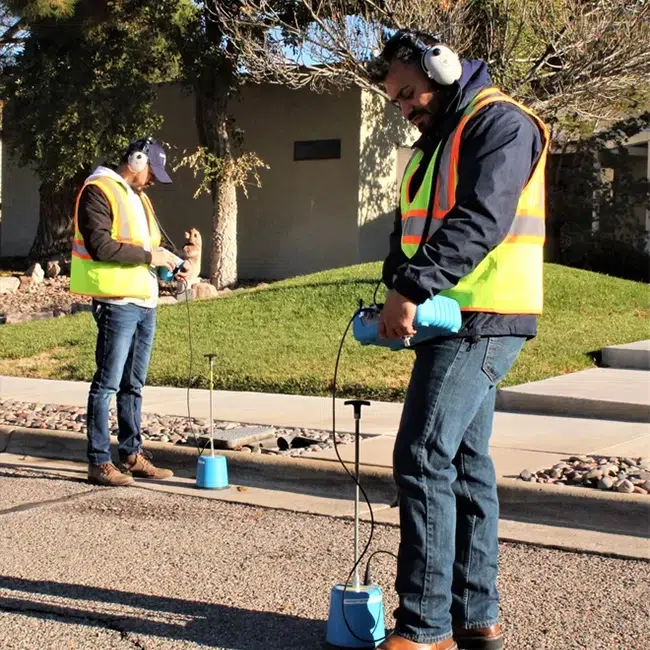Ingenious Solutions for Very Early Discovery of Water Leaks in Buildings and Facilities
As the stability of buildings and infrastructure is extremely important, the obstacle of very early discovery of water leaks has actually stimulated innovative services that promise to transform the way we guard against possible damages. From innovative leak detection modern technologies to the deployment of IoT sensing units for real-time surveillance, the landscape of leakage avoidance is developing quickly. Equipment discovering formulas supply a look into the future of leakage forecast, while thermal imaging provides a non-intrusive approach for pinpointing covert leakages. Automated water circulation evaluation systems are reshaping exactly how leakages are recognized and addressed, leading the way for an aggressive approach to water leak detection. Each of these options holds the vital to making sure the integrity and long life of our constructed environment, prompting a shift towards a much more sustainable and effective future.
Advanced Leak Detection Technologies
Advanced leakage discovery technologies, equipped with advanced sensing units and algorithms, play a critical duty in quickly identifying and determining water leaks in numerous settings. Electro-magnetic sensing units can identify adjustments in electro-magnetic areas triggered by water, offering yet an additional layer of leakage discovery capability.

IoT Sensors for Real-Time Monitoring
In the realm of contemporary water leakage discovery, the integration of IoT sensing units for real-time surveillance represents a critical innovation in enhancing positive leak discovery capacities. These sensing units offer continuous tracking of water supply, giving real-time data on water flow rates, pressure variants, and temperature level adjustments. By leveraging IoT technology, these sensors can identify also the smallest abnormalities in water use patterns, enabling early identification of potential leaks prior to they intensify right into significant problems.
IoT sensing units transfer data to a centralized platform, where advanced algorithms evaluate the details and create informs or notifications when irregularities are discovered. This real-time tracking ability allows building proprietors or center managers to promptly address leakages, decreasing water damages, decreasing repair work costs, and preserving water sources.
Additionally, IoT sensors can be incorporated with structure management systems, enabling computerized feedbacks to found leaks, such as turning off water shutoffs or triggering pumps to reduce the impact of leakages. In general, the execution of IoT sensing units for real-time monitoring significantly improves the effectiveness and effectiveness of water leak discovery in structures and facilities.
Artificial Intelligence Algorithms for Leakage Prediction

One secret advantage of making use of artificial intelligence for leakage forecast is its capability to continuously find out and enhance its accuracy over time. As even more data is accumulated and fed right into the algorithm, it can refine its forecasts and adjust to altering conditions, inevitably enhancing the dependability of leak detection systems.
Moreover, machine understanding formulas can assist in determining subtle signs of leaks that might go undetected by traditional monitoring methods. water leak detection. By assessing complicated information collections in real-time, these algorithms can offer early cautions and signals, enabling punctual treatment and precautionary maintenance to alleviate potential water damage and connected costs
Utilizing Thermal Imaging for Leak Discovery
Thermal imaging innovation uses a promising method for detecting water leaks in numerous systems and frameworks. By making use explanation of infrared radiation and temperature level differences, thermal imaging video cameras can identify surprise leakages that are not quickly noticeable to the nude eye. When water escapes from pipes or structures, it often changes the temperature level of the bordering location, creating temperature differentials that thermal video cameras can catch. These temperature level abnormalities are then translated into visible pictures, highlighting the precise place of the leakage.
One of click this the crucial advantages of thermal imaging for leakage detection is its non-intrusive nature. Overall, the usage of thermal imaging innovation boosts the performance and accuracy of water leakage discovery, making it an important device for preserving the integrity of structures and facilities.
Automated Water Flow Evaluation Systems
Just how can automatic water circulation analysis systems revolutionize the discovery and management of leakages in various systems and facilities? Automated water flow evaluation systems offer a positive approach to leakage detection by continually keeping track of water circulation prices and patterns. By establishing standard data, these systems can quickly determine deviations that might show a leak, making it possible for prompt intervention to avoid comprehensive damage.
These systems make use of innovative algorithms to assess real-time data and supply immediate alerts when anomalies are identified, enabling speedy action to be taken. Furthermore, automatic water circulation evaluation systems can be incorporated with structure management systems or IoT systems, enhancing general effectiveness and enabling remote surveillance capacities.
Additionally, the data accumulated by these systems can be made use of for predictive official site upkeep purposes, assisting to identify potential weak points in the facilities before leaks occur. Overall, the implementation of computerized water circulation evaluation systems can dramatically boost leakage detection and administration practices, ultimately leading to set you back financial savings, minimized water waste, and enhanced sustainability in structures and facilities.

Conclusion
To conclude, the combination of sophisticated leakage discovery modern technologies, IoT sensing units, machine learning algorithms, thermal imaging, and automated water flow analysis systems provides ingenious services for early detection of water leaks in buildings and infrastructure. These technologies enable real-time monitoring, prediction of leakages, and reliable discovery approaches to stop water damage and wastage. Implementing these solutions can aid in maintaining the integrity and sustainability of water supply in numerous setups.